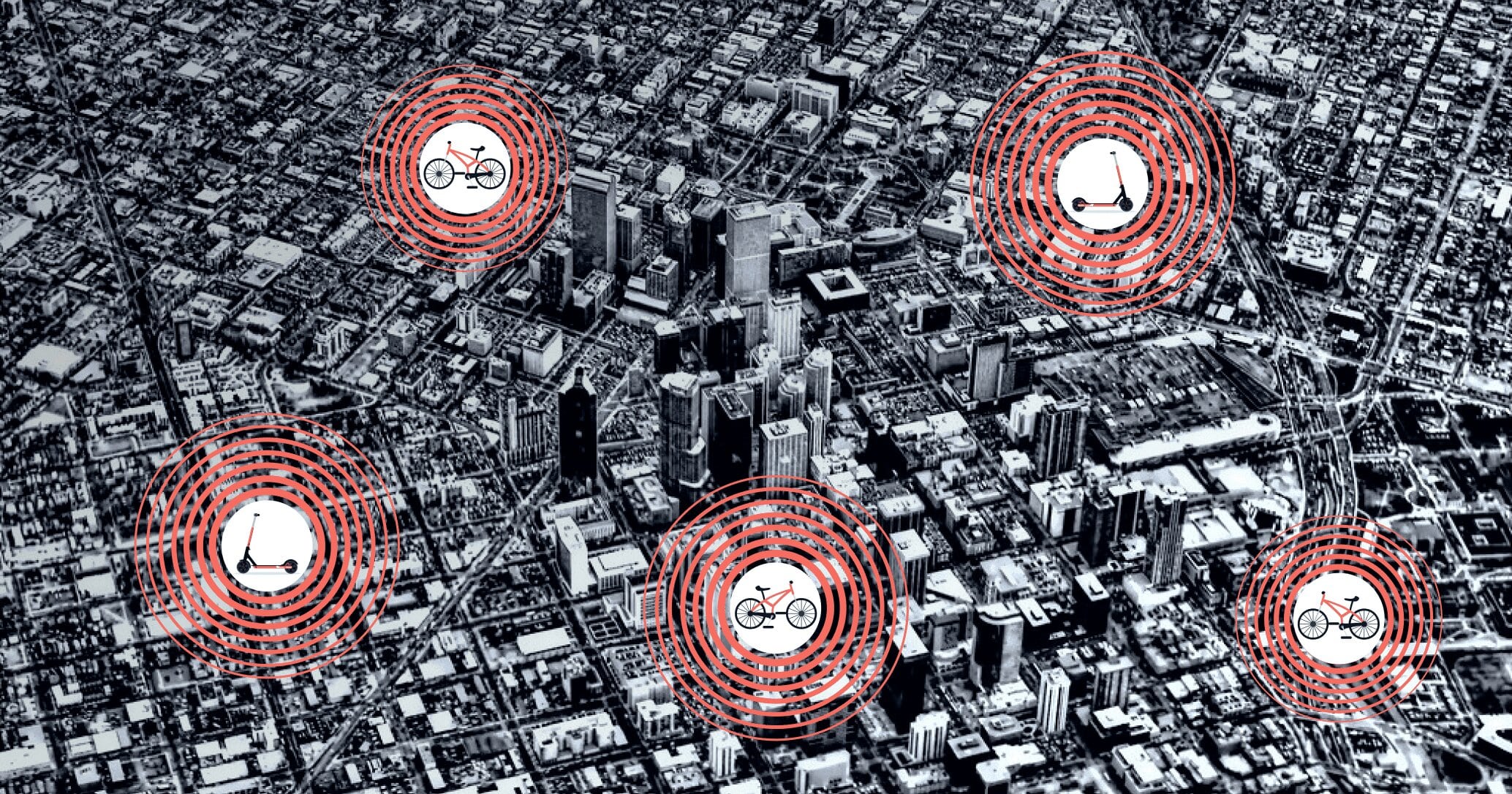The role of micromobility across cities is changing quickly, and the way we communicate is moving along with it. As more scooters, bikes and mopeds take to the streets, the need for intelligent and properly sourced trip insights continues to grow.
For those looking to launch a micromobility system or grow an existing business, understanding the basics behind the Mobility Data Specification (MDS) and General Bikeshare Feed Specification (GBFS) work is a core necessity—as is knowing how harnessing these technologies will better your business while being city-compliant. Here, we’ve outlined the main questions we receive about MDS and GBFS, along with how they’re seamlessly fed through Joyride’s software platform.
Joyride’s Guide to MDS and GBFS in Micromobility
For starters, what is MDS?
MDS is a set of Application Programming Interfaces (APIs) centered around dockless e-scooters, bicycles, mopeds and carshares. Managed by the Open Mobility Foundation, it’s free, open-source and digital-first, meaning no two cities will use MDS the same exact way.
The data feed is designed to help cities interact with mobility service providers by standardizing how municipalities or other regulatory agencies intake, compare and analyze current and historic use patterns. It also gives municipalities a crucial piece of digital infrastructure that helps them properly implement global policies. For cities, MDS helps them better manage vehicles, improve safety and promote equity. For operators, having MDS provides a competitive edge as it can be implemented in new markets with little effort, ultimately saving time and money.
What is GBFS?
Modeled after the widely used General Transit Feed Specification (GTFS), GBFS is a common format used to share the real-time status of shared vehicles. It enables an agreed-upon exchange of information between multiple parties where data is used for trip planning, research, analysis, visualization and regulation. Updated most recently in April 2021, the public availability of GBFS allows regulators, researchers and community members to gain insights that have helped municipalities meet their goals.
How are MDS and GBFS different?
GBFS is typically meant to be publicly available in order to help users with trip-planning, while MDS is primarily used for non-public purposes in regulation by cities and other agencies. GBFS runs on real-time feeds, while MDS also includes historical trip and vehicle status information. The latter contains sensitive location data and is only available through specifically authorized channels. In order to be considered fully MDS-compliant, operators must also publish a public GBFS feed.
How can MDS and GBFS be used by operators to win permits and collaborate with cities?
MDS is an industry-wide and, in some cases, cross-industry standard. It defines a universal language through which members of the micromobility industry can communicate electronically. This standardized method of exchanging information has ushered in an incredible amount of innovation. Increasingly, cities are adopting strong micromobility policies and embracing the many benefits it has to offer.
These initiatives often come with unique requirements related to public safety, licensing, insurance and smart city integration. Municipalities will often partner with third-party services to ensure that micromobility transportation within their region is well-managed.
When it comes to selecting operators who will be granted permission to provide micromobility services to the public, a key component is ensuring that the licensee is capable of meeting their strict reporting guidelines. MDS may be a requirement of operators who are running a traditional public shared model. Should the city require this data, Joyride’s platform will immediately provide an MDS and GBFS data feed to ensure city compliance.
Is it just about being cooperative, or can being MDS/GBFS-compliant boost business?
While it’s certainly about being cooperative, there are tangible benefits that go along with that. Third-party aggregators, community-run services and even mobile apps for public transportation all leverage MDS and GBFS feeds as a core means of acquiring and exchanging data, as we see with our partnerships with insights platforms like Populus.
GBFS is a public feed, and is often picked up by aggregators and value-added services. This can put your business, and your vehicles in front of potential riders who otherwise may not have known about your service. In other cases, your service may be presented to a potential customer as an option they had not considered, even if they were aware of your service.
There is also a trend of partnerships emerging within the industry in a whole mosaic of situations from trip-planning services to tourism associations. Having MDS and GBFS makes you instantly available for integration with such services, usually with no need for customization or special effort, since Joyride takes care of this for you.
How has the pandemic changed how cities view mobility data?
While the world is eager to put the pandemic behind us, the impact it has had on global city infrastructure isn’t going anywhere. Thousands of bike lanes have emerged as a result of shifting acceptance—or more like eager embrace—of two-wheeled vehicles like bikes and scooters, meaning new mobility policies are being developed at impressive speeds.
This means cities are relying on more insights than ever to shape their policies, and there’s more competition than ever among micromobility companies to vie for permits to operate a municipal fleet. By showing compliance and willingness to share key insights, you’re really communicating to officials that your business has a clear interest in making sure micromobility is implemented properly.
How does Joyride’s platform integrate with MDS and GBFS? How is it unique to other software companies?
Joyride was an early adopter of GBFS and MDS, and we have continuously focused on increasing MDS functionality within our platform for both our own integrations, and integrations for our operators. From an operator perspective, MDS and GBFS is a seamless process. All the heavy lifting is managed by the Joyride platform.
Simply by joining the Joyride community, operators have the ability to enable MDS and GBFS-compliant feeds for each and every fleet they operate. What makes our MDS and GBFS integrations unique is that we manage MDS and GBFS data feeds for many different operators and for hundreds of fleets and thousands of vehicles, all simultaneously.
How does Joyride’s Populus partnership benefit mobility operators?
Based on ongoing conversations with cities around the world, Populus has developed a robust set of tools that will equip your city partner to answer and address the most common operational, policy and planning questions about your mobility services.The current features of the Populus platform that can be made available to your city partner immediately upon accessing the MDS feeds via Joyride include:
- Live maps for vehicle and fleet monitoring
- Complaint and incident management
- Data-driven spatial policy design tools
- Trip and transportation systems analysis
- Analysis of vehicle and fleet performance and compliance
- Equity analysis for zone- and/or performance-based policies
- Mobility customer survey deployment
Populus ingests real-time and historic data from any dockless operators in MDS format and at multiple reporting frequencies. Populus is fully prepared and uniquely qualified to perform complex data harmonization, processing and transportation analysis using any data standard required today or in the future. Populus is also happy to consult on the data requirements necessary to provide the key insights your city partner requires for policy and planning.
MDS and GBFS Micromobility: What’s required to get started?
Providing MDS and GBFS feeds are seamlessly integrated with our platform. It’s a paid feature as part of our SaaS offerings and is available to fleets of varying sizes. To find out more, speak to a Joyride sales representative today.






